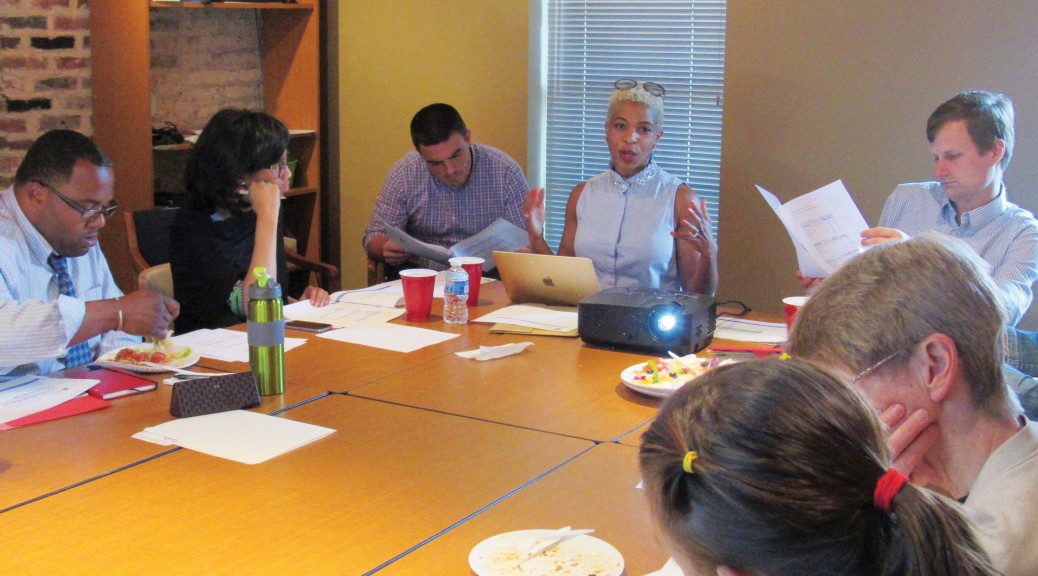The Southeast Community Development Corporation (SECDC) recently convened an education task force to study district-wide elementary/middle school overcrowding and develop a set of recommendations to present to the Baltimore City Board of School Commissioners (BCPSS) in October of 2016.
The task force, which was formed in April, is specifically looking at ways to reduce chronic overcrowding while at the same time support immigrant and refugee families, and promote mixed-income neighborhood schools.
“Nearly all of the K-8 schools in Southeast Baltimore are over the 100% building utilization rate, which translates into high enrollment and frequently, large class sizes,” says Chris Ryer, director of the SECDC, who assembled the group, which is comprised of local parents and other stakeholders.
Southeast Baltimore has the highest school building utilization rate of any the city schools’ six planning areas – with a 111% average utilization rate for its elementary and K-8 schools.
Specifically, Commodore John Rodgers Elementary School, located on North Chester Street just below Fayette Street, has a 135% building utilization rate, while Highlandtown Elementary, (PS #237) on Eaton Street, has a 143% building utilization rate. Other schools are even higher, with John Ruhrah in Greektown topping out at an astonishing 188% building utilization rate.
“Right now, we are only playing catch-up by building where the schools are already incredibly overcrowded. But none of it will accommodate future growth, and no one expects this growth to stop anytime soon.” Ryer told the task force at its May meeting.
The group, which is led by education consultant and former City Schools administrator Nakeia Drummond, includes parents of students from the schools surrounding Patterson Park; Commodore Rodgers (K-8), Hampstead Hill Academy (K-8), Highlandtown #215 and #237 (K-8) schools, Patterson Park Public Charter (K-8), Tench Tilghman (K-8), William Paca and Wolfe Street Academy (K-5), and representatives from the Latino Providers Network and Live Baltimore.
Shannon Sneed, the Democratic nominee for the City Council’s 13th district seat, and State Senator Bill Ferguson, who represents the State’s 46th district, also sit on the task force.
Two School Additions in 2020, but What About Ellwood Park?
To make more room for students, City Schools has already committed to building additions onto both Highlandtown Elementary and Commodore John Rodgers as part of its 21st Century School Buildings plan. Both are Year 2 schools and are slated to have additions completed by 2020.
But, while larger school buildings will alleviate classroom overcrowding at those schools and eliminate the immediate deficit, the task force believes those additions are not enough to reduce current or future overcrowding district-wide – and specifically won’t offer a solution for students who live in the Ellwood Park community.
“An expanded Highlandtown Elementary or Commodore John Rodgers is not within reasonable walking distance of Ellwood Park, the neighborhood where the highest concentration of school-aged children live,” Ryer told the task force members.
And, while the school system generally provides bus transportation to elementary students who live more than a mile away from their zoned school (and to middle schoolers who live more than a mile and a half away) students who attend schools out of zone are responsible for their own transportation.
“Even if kids in Ellwood Park could attend Commodore and Highlandtown, they would be looking at very long walks to school,” Ryer said, adding. “And we’re talking about little kids here.”
The task force is currently evaluating whether the district needs an additional K-8 school, or if an existing K-5 could be expanded, and if so what are options for the school’s location and zoning. Drummond recently consulted with eight principals from elementary and middle schools in the southeast to gain their input.
A Newcomer Center?
Of specific concern to the task force, as well as many of the principals, are the needs of the district’s large immigrant and refugee student population.
The southeast school district has the largest immigrant and refugee student population in Baltimore. Many of the students arrive at schools throughout the academic year with little or no English language skills.
“Some schools in the southeast are receiving immigrant students almost daily,” Ryer told the task force, which is additionally looking at whether the district should establish a “newcomer center” for these students within a new or existing K-8 school.
Newcomer centers teach new students English within a traditional school setting and sometimes provide other services. They are frequently found in cities with high immigrant-refugee populations.
“The district does not have a model that is easy to duplicate in Southeast Baltimore,” Drummond noted.
“A newcomer center came up in almost every conversation I had with southeast principals, and their response was supportive,” she added.
The task force is examining other issues, including the school system’s ongoing study of school zones and the impact possible school rezoning could have on southeast communities.
It will meet throughout June and share preliminary recommendations with the community via a survey this summer.
